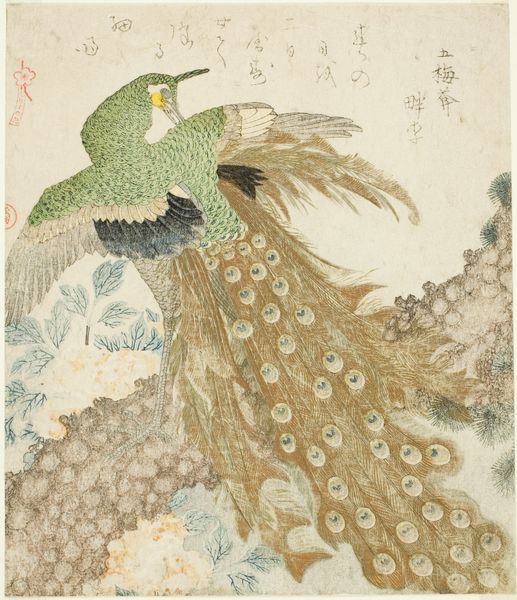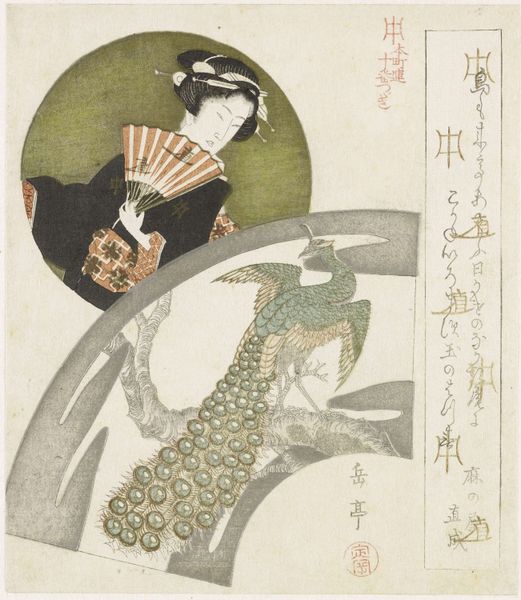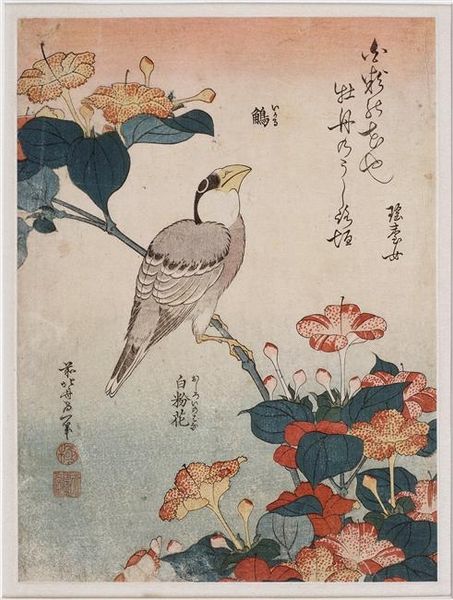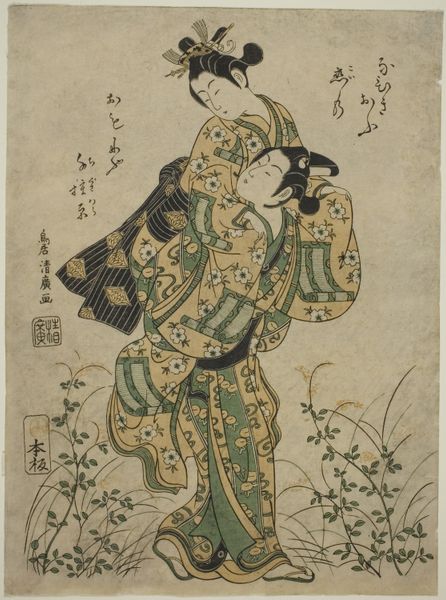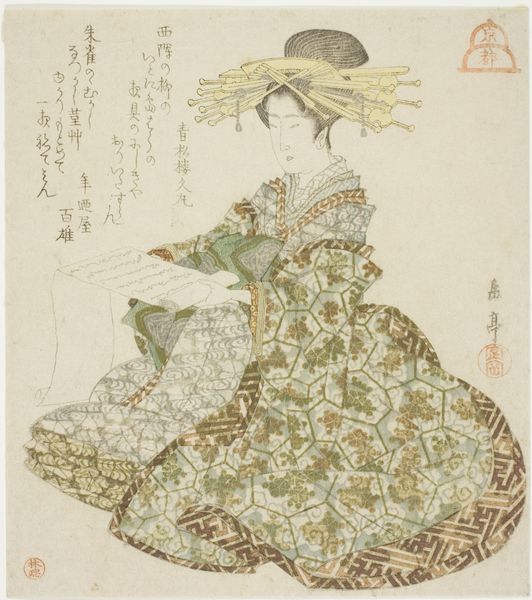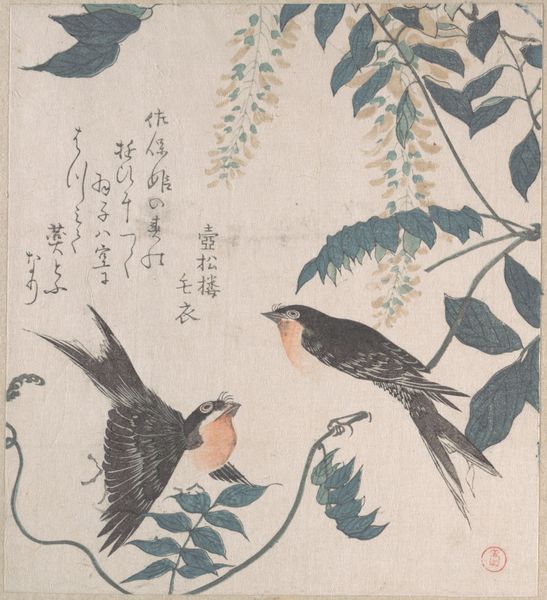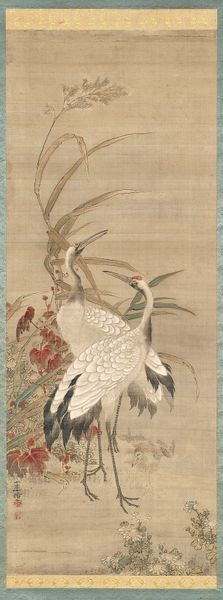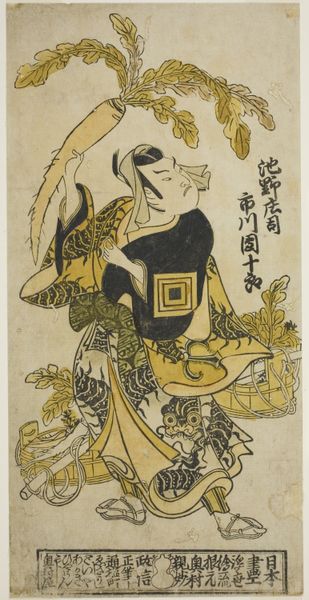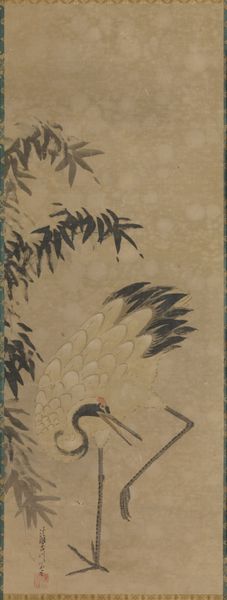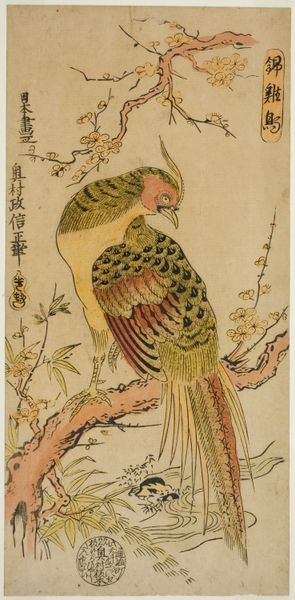
drawing, print, watercolor, woodblock-print
#
drawing
#
water colours
# print
#
asian-art
#
landscape
#
ukiyo-e
#
figuration
#
watercolor
#
woodblock-print
#
orientalism
#
symbolism
#
japanese
#
watercolour illustration
Copyright: Public domain
Curator: Before us we have Toyota Hokkei’s "Peacock on the Pine Tree," a Japanese woodblock print employing watercolor. My first thought is the tension created by that sweeping tail! It gives a feeling of weighted regality. Editor: I'm immediately struck by the layering of symbols here—the peacock, the pine, even the peony, all potent signifiers. Curator: Precisely! In Japanese art, the peacock, derived from its association with the Indian peacock which removes poison, functions as a guardian, especially against misfortune. Look at the way Hokkei renders each individual "eye" of the peacock's feathers, drawing attention to this potent motif. Editor: And juxtaposing the peacock with the pine tree anchors this piece firmly in themes of longevity and resilience. Pines represent steadfastness. This is particularly interesting to consider in the context of the time in which it was created; I wonder how its initial viewers received it? Curator: This work reflects the vibrant Edo period where there was a flourishing of artistic expression and commercial publishing of Ukiyo-e prints. Hokkei himself was a student of Hokusai; he expertly carries on the language of his teacher. The combination of watercolor washes with strong line work feels so indicative of Ukiyo-e tradition. It draws on nature and transforms it into a commentary. Editor: Definitely. And given the socio-political climate—the strict class hierarchies, the rise of a merchant class with newfound wealth—art became a subtle way of expressing both status and aspiration. To whom was it marketed, I wonder? Curator: Likely to that wealthy merchant class, keen to display symbols of prosperity and protection. It’s worth remembering that the Ukiyo-e tradition itself was about capturing the floating world, that ephemeral moment, and grounding it within a rigid societal structure through symbolism. Editor: So much here acts as a reminder that visual language evolves over time. I appreciate seeing familiar symbolic expressions that hold cultural weight throughout history. Curator: Indeed. Examining these visual tools invites contemplation of their lasting presence in modern expression. Hokkei's "Peacock on the Pine Tree" offers layers of understanding.
Comments
No comments
Be the first to comment and join the conversation on the ultimate creative platform.
